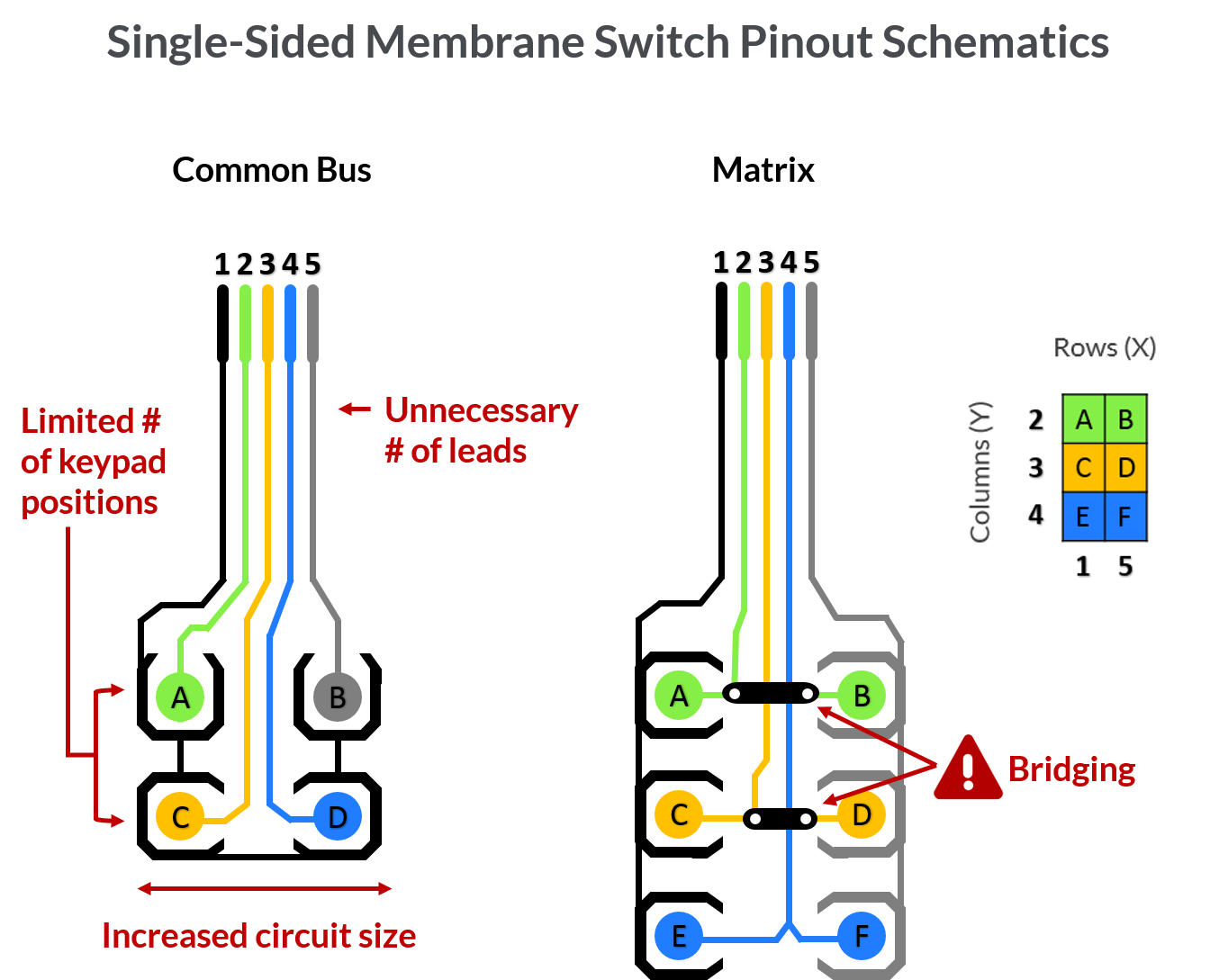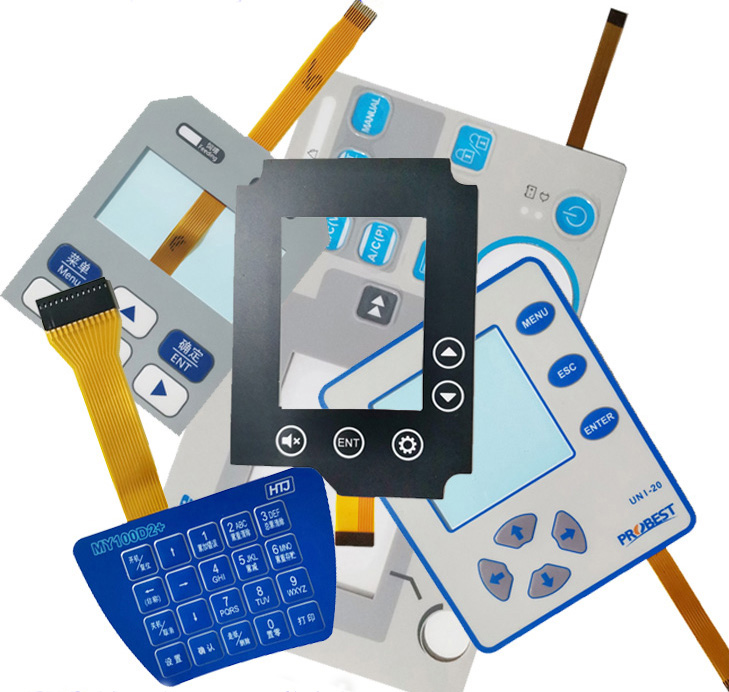Recognizing Membrane Layer Changes: The Trick to Trustworthy and sturdy Controls
Membrane switches stand for a vital element of modern-day user interface style, blending performance with durability in numerous applications. As we explore the details of membrane switches, it ends up being clear that their function in improving control systems is both extensive and complicated, elevating concerns about how best to leverage their capabilities in future innovations.
What Are Membrane Switches?
Membrane switches are a sophisticated service in the realm of user interface modern technology, integrating capability and style effortlessly. These gadgets act as an interface in between individuals and digital systems, incorporating several parts right into a small format. Typically created from flexible, thin layers of materials, membrane buttons are designed to react to touch, enabling customers to connect with machinery and electronic gadgets properly.
The primary aspects of a membrane button include a published circuit layer, visuals overlay, and a spacer layer that prevents unexpected activation. The graphic overlay can be tailored to show brand identification or user choices, boosting visual appeals while ensuring functionality. Membrane buttons are typically used in numerous applications, including medical gadgets, customer electronic devices, and industrial tools, owing to their sturdiness and resistance to environmental aspects such as moisture and dirt.
One of the crucial advantages of membrane layer buttons is their capacity to stand up to wear and tear, making them ideal for high-traffic atmospheres. Additionally, they are lightweight and need very little room, enabling for innovative layouts in product growth. In general, membrane switches stand for a functional and efficient option for contemporary digital interfaces, weding modern technology with user-centric style principles.

How Membrane Switches Work
The operation of membrane layer switches over joints on a simple yet efficient mechanism that translates customer input into electronic signals. When a customer presses the button, the top layer flaws, enabling a conductive aspect in the circuit layer to make call with a matching conductive pad on the underside of the graphic overlay.
The layout of membrane layer buttons can differ, yet they typically incorporate domes or tactile elements to supply feedback to the individual, enhancing the overall experience. The materials made use of in membrane layer switches, such as polyester or polycarbonate, add to their toughness and resistance to ecological aspects, consisting of moisture and dust. In addition, the published circuits are normally enveloped, which secures them from deterioration gradually.

Benefits of Membrane Layer Switches
One of the primary advantages of membrane buttons is their versatility in design, allowing them to be customized to meet details user needs and visual requirements. This adaptability encompasses different markets, where various forms, sizes, and colors can be employed to enhance customer communication and aesthetic allure.
Additionally, membrane switches are understood for their sturdiness. Created from robust products, they are resistant to dust, dampness, and physical wear, which considerably expands their life-span contrasted to traditional mechanical switches. This toughness makes them especially ideal for high-traffic atmospheres and applications calling for durability.

Additionally, membrane switches supply a streamlined account, causing a thinner layout that can be read incorporated into numerous tools without including bulk. This function not just enhances the aesthetic allure but additionally adds to a much more ergonomic item style.

Applications of Membrane Layer Switches
Functional and user-friendly, membrane layer switches locate applications across a large range of markets, including clinical devices, customer electronics, and commercial equipment. In the medical area, these switches are integral to gadgets such as analysis equipment, patient monitoring systems, and infusion pumps, where integrity and convenience of cleansing are crucial. Their capability to stand up to severe atmospheres and keep functionality makes them perfect for such applications.
In customer electronic devices, membrane layer buttons are utilized in items like microwaves, cleaning equipments, and remotes - membrane switch. Their smooth style permits instinctive user interfaces, boosting the total customer experience while providing toughness and resistance to tear and use
Commercial tools additionally benefits from membrane switches, especially in control panels for equipment and automation systems. These switches supply security versus dust and wetness, ensuring consistent efficiency in tough environments. Moreover, their adjustable functions allow makers to customize them to details functional requirements, boosting performance and performance.
Choosing the Right Membrane Layer Change
When choosing a membrane button, it is important to take into consideration different factors that influence efficiency and viability for specific applications. The main factors to consider consist of environmental problems, tactile responses, resilience, and style requirements.
First, examine the operating environment; switches subjected to dampness, chemicals, or extreme temperatures call for specific materials to make sure longevity and capability. Next off, evaluate the requirement for responsive responses. Relying on user communication, some applications may take advantage of a responsive feedback to validate activation, while others may choose a non-tactile style for aesthetic factors.
Durability is one more critical variable; membrane switches must be designed to hold up against frequent use, effects, and abrasion. Ensure the picked button can endure the anticipated lifecycle, particularly in high-usage scenarios.
Verdict
To conclude, membrane switches over function as important components in the style of long lasting and trusted control systems throughout various sectors. have a peek at this site Their compact design, incorporated with durable construction and personalized features, boosts user communication while guaranteeing durability popular settings. The convenience of membrane switches enables for tailored options that fulfill particular functional demands, enhancing their value in contemporary technology. membrane switch. As markets remain to progress, the value of incorporating reliable membrane layer button options can not be overstated.
Membrane switches over stand for a critical element of modern-day user interface style, blending capability with durability in various applications.Membrane layer buttons are an innovative service in the realm of individual original site interface technology, integrating capability and layout perfectly. Usually constructed from flexible, slim layers of materials, membrane buttons are designed to respond to touch, making it possible for users to communicate with equipment and digital gadgets properly.
The design of membrane buttons can differ, but they usually integrate domes or tactile aspects to give comments to the user, boosting the total experience.In conclusion, membrane switches over serve as important parts in the style of resilient and trustworthy control systems throughout various markets.